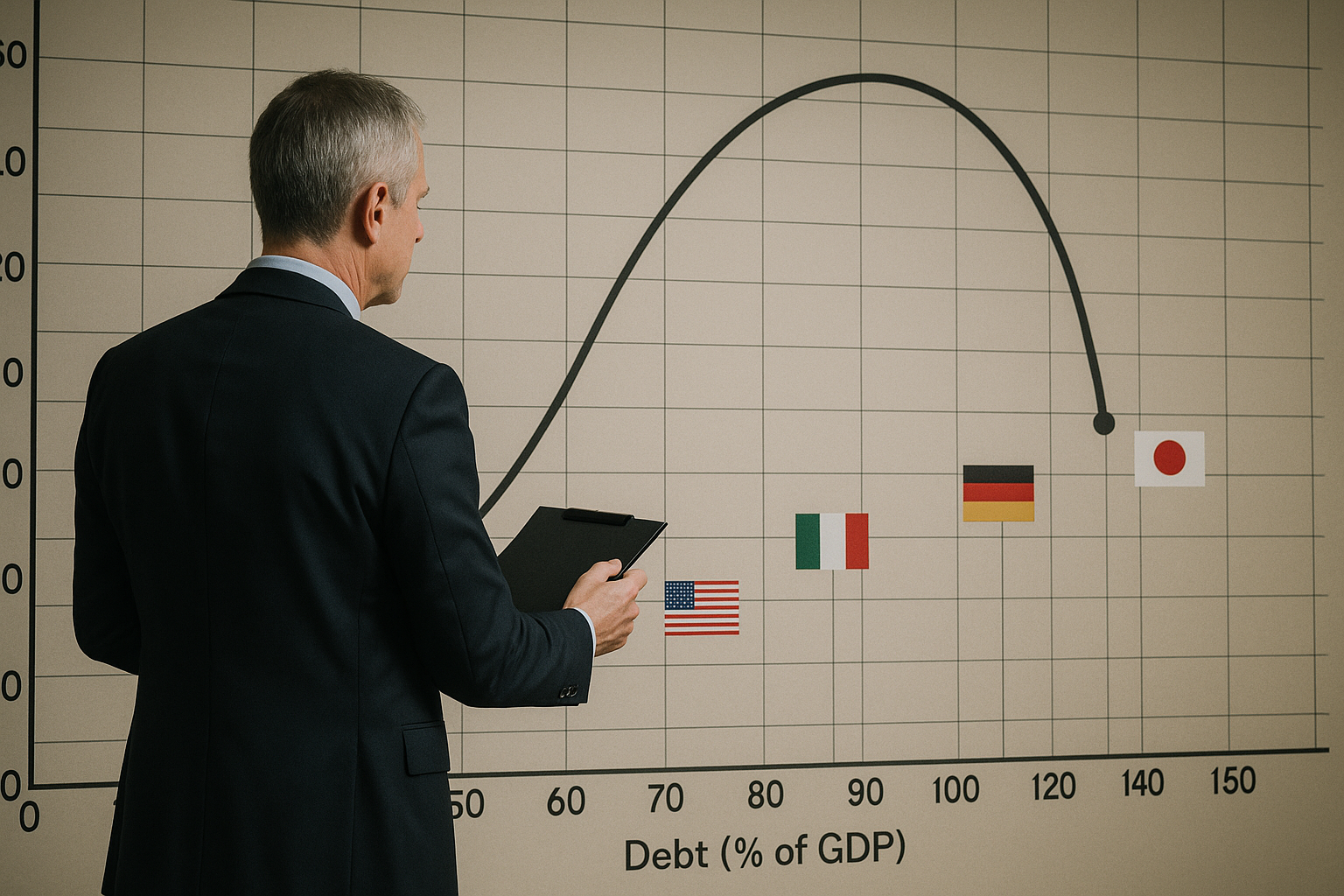P-Theory Unveils Nations’ Debt Thresholds Amid Rising Global Fiscal Pressures
The IMF’s 2025 study “Maximum Sustainable Debt Across Countries: An Assessment using P-Theory” uses a novel fiscal–financial model to estimate how much debt nations can safely sustain. It finds advanced economies have larger buffers, while many emerging and low-income countries are nearing or exceeding their sustainable debt limits, heightening the risk of distress.

Global public debt has surpassed $100 trillion and is on track to reach 100 percent of global GDP by 2030, according to the IMF's World Economic Outlook. The study warns that under severe global stress, rising interest rates, geopolitical tensions, and policy uncertainty, debt could climb an additional 20 percentage points of GDP. These alarming trends underscore the urgency of identifying the "maximum sustainable debt," defined as the highest debt-to-GDP ratio a government can maintain without losing solvency. By connecting theoretical insights with real data, the authors provide policymakers with a new empirical benchmark for debt sustainability.
The Mechanics of P-Theory
The P-theory framework models a government that must decide how much to borrow, tax, and spend while accounting for default risks and market pricing. It incorporates key components of modern macro-financial analysis: the global risk-free rate, convenience yields (the premium investors accept for holding safe assets), jump-risk premia (the risk of sudden fiscal shocks), and tax distortions. The model determines the precise threshold, called b̄, where a government becomes indifferent between repaying and defaulting on its debt. This threshold depends on economic growth, tax efficiency, and the cost of default. The authors refine the model into a simple, solvable form that links fiscal policy and asset pricing, offering a tractable tool for comparing debt limits across nations.
Calibrating the Global Map of Fiscal Space
To ensure realism, the authors calibrate the model using IMF and market data. The real risk-free rate is set at 0.9 percent, while historical growth averages are 2.1 percent for advanced economies, 3.5 percent for emerging markets, and 4.3 percent for low-income countries. The probability of a debt surge, a sudden, large increase in liabilities, is estimated at 4.3 percent for advanced economies, 5.9 percent for emerging markets, and 8.2 percent for low-income countries. Countries like the United States, Japan, and Germany benefit from high convenience yields, reflecting their status as safe-asset issuers. By contrast, nations with weak institutions and volatile economies face tighter constraints, as fiscal inefficiencies and higher default probabilities limit their ability to borrow.
Winners, Losers, and Fiscal Boundaries
The results reveal vast differences in debt-carrying capacity. Advanced economies can sustain debt averaging 124 percent of GDP, emerging markets around 76 percent, and low-income countries about 57 percent. These gaps mirror variations in institutional strength, policy credibility, and exposure to economic volatility. In 2024, 54 countries already had debt levels exceeding their sustainable limits, though the figure could drop slightly to 49 by 2029 if fiscal adjustments occur. The estimates closely match IMF–World Bank debt sustainability ratings: countries deemed at "low risk" of distress enjoy a cushion of nearly 30 percent of GDP, while those in "debt distress" exceed their limits by about 44 percent. Case studies illustrate these dynamics vividly. Brazil's debt limit fell from 114 percent of GDP in 2014 to 91 percent in 2017 before rebounding post-pandemic, while the United States saw its limit peak at 213 percent in 2018 before declining and stabilizing around pre-COVID levels.
A Cautionary Outlook for Policymakers
The paper's sensitivity tests highlight how fragile debt sustainability can be. A mere 0.5 percentage-point rise in global interest rates can sharply lower a country's sustainable debt threshold, especially where the gap between interest rates and growth is narrow. Likewise, increases in public spending have mixed effects: for nations with fiscal headroom, they can enhance long-term capacity, but where tax ceilings bind, they risk pushing debt into unsafe territory. The authors stress that sustainable debt is not static but evolves with macroeconomic conditions, interest-rate cycles, and fiscal credibility.
While advanced economies still enjoy broader fiscal buffers, they remain exposed to sudden financial tightening. Emerging and low-income countries, meanwhile, face diminishing fiscal space and growing default risk. The P-theory framework, by combining theory with empirical rigor, offers a dynamic and transparent tool to measure fiscal resilience. In an age of persistent deficits and tightening global liquidity, the authors argue, debt sustainability must be viewed not as a fixed limit but as a moving target, one shaped by the delicate interplay of economic fundamentals, financial markets, and institutional trust.
- FIRST PUBLISHED IN:
- Devdiscourse









